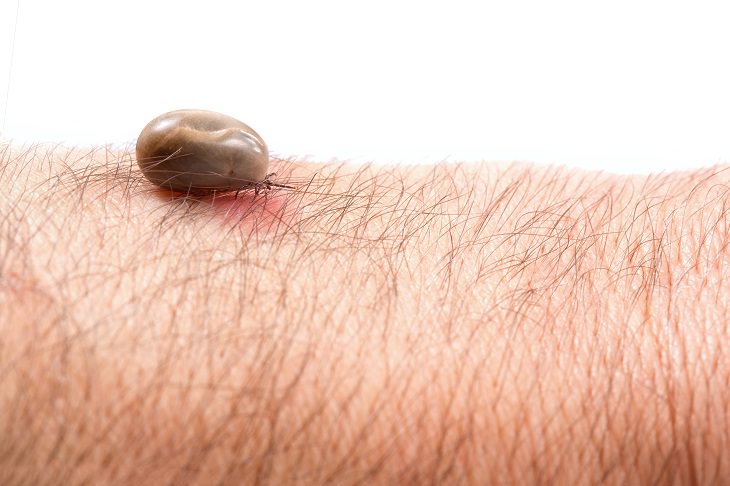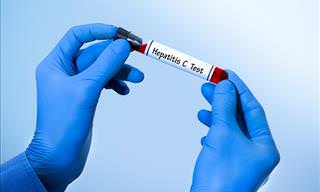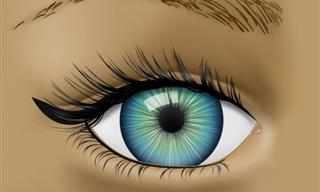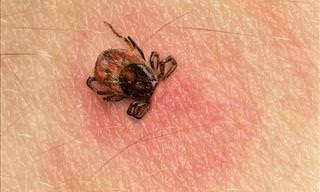What Are the Symptoms of Lyme Disease?

Early signs and symptoms of this disease include chills, fever, fatigue, headaches, muscle and joint pain, and swollen lymph nodes. In about 70-80% of infections a rash is seen. This rash will gradually expand over a period of days and can grow to around 12 inches wide. It may feel warm to the touch, but it shouldn’t be itchy or painful, and it can appear anywhere on the body.
As the infection progresses, symptoms can include:
• Severe headaches or neck stiffness
• Heart palpitation or an irregular heartbeat
• Inflammation of the spinal cord and brain
• Loss of muscle tone or drooping on one or both sides of the face
• Additional rashes on other parts of the body
• Arthritis with severe joint pain and swelling, particularly in the knees
• Shooting pains, numbness, and tingling in the hands or feet
How is Lyme Disease Diagnosed?
Lyme disease is diagnosed based on symptoms and history of tick exposure. A two-step blood test may also be taken, but the accuracy of this test depends on the stage the disease is in. For example, in the first few weeks of infection, the test may be negative, as antibodies take a few weeks to develop. These tests aren’t recommended for patients who don’t have any of the common symptoms of Lyme disease.
How is Lyme Disease Treated?
The antibiotics amoxicillin and tetra cycline are used, usually for 10-21 days. Other antibiotics that might be used are cefuroxime and doxycycline. If you get treatment for Lyme disease when the infection is at an early stage, it is likely that you will make a full recovery.
How Prevalent is Lyme Disease?

About 30,00 cases are reported each year, but the CDC estimates that you can add another 300,000 infections to this figure. Infection is more common in males up to age 15 and between the ages of 40 and 60. The reason for this is these are people who are more likely to play outside, and go hiking, camping, and hunting.
How to avoid ticks completely and prevent catching Lyme disease
What Areas Are More Likely to Have Lyme Disease?
Mainly the Mid-Atlantic states, New England, and parts of the upper Midwest. According to the CDC, 95% of confirmed cases in 2015 were in the following 14 states: Delaware, Maine, Connecticut, Minnesota, Maryland, Massachusetts, New Hampshire, New York, New Jersey, Pennsylvania, Vermont, Rhode Island, Wisconsin, and Virginia. It can also be found in California, where it is carried by deer.
Black-legged ticks can be found in 43 states, but they behave differently according to the climate. For example, in the South, which is more prone to hot weather, ticks tend to stay under leaf litter and don’t come out to feed as they’ll dry out. This means that Southern ticks don’t transmit Lyme disease frequently as they don’t tend to feed on humans.
What’s Driving up Lyme Disease Numbers?
While increasing temperatures worldwide has made more Northern areas such as Maine, Canada, and Minnesota hospitable to ticks, the population of deer carrying the ticks probably plays a much bigger role.
Development led to record low numbers of deer early in the last century, but the deer population has increased as a result of reforestation over the past several decades, meaning the tick population has increased as well. Furthermore, white-footed mice, which also transmit Lyme disease to ticks that bite them, are moving closer to humans as their habitat disappears.
Another reason is that warm weather and mild winters may bring more people outside, increasing their chances of being bitten, especially in Lyme-prone areas.
How Do You Know If You’ve Been Bitten?

Since ticks are the size of a poppy seed, you’ve got to have pretty good eyesight to spot them. The CDC recommends that if you’ve been walking in the woods, tall grass, or working in your garden, that you check your skin afterwards, ideally in the bath or shower.
What Do You Do If There’s a Tick Under Your Skin
Remove it with a pair of tweezers as soon as possible, pulling upward with steady pressure. If parts of the tick remain in your skin, try to remove them with the tweezers. After everything is out, clean the area with rubbing alcohol or soap and water. Put the tick in a piece of tissue, and close it in a zip bag.
When should You See Your Doctor?
A rash is a pretty good indication that you might have Lyme disease. Therefore, if a rash starts to develop in the area you were bitten, you should visit your doctor immediately. At this stage of the illness, treatment with some antibiotics will likely see you make a full recovery.
What’s the Best Way to Prevent a Tick Bite?
Ticks cannot fly or jump, but instead live in shrubs and bushes, and grab onto someone when they walk by. To avoid getting bitten, wear pants and socks in woods, areas with a lot of trees, and while handling fallen leaves. Wear some tick repellents and clothing that has DEET, lemon oil, or eucalyptus.
Shower as soon as you get home. This lets you look at your skin and wash any ticks out of your hair. Furthermore, put the clothes you were wearing into a hot wash to kill whatever ticks might remain.
Source: webmd
Images: depositphotos
 Go to BabaMail
Go to BabaMail



























